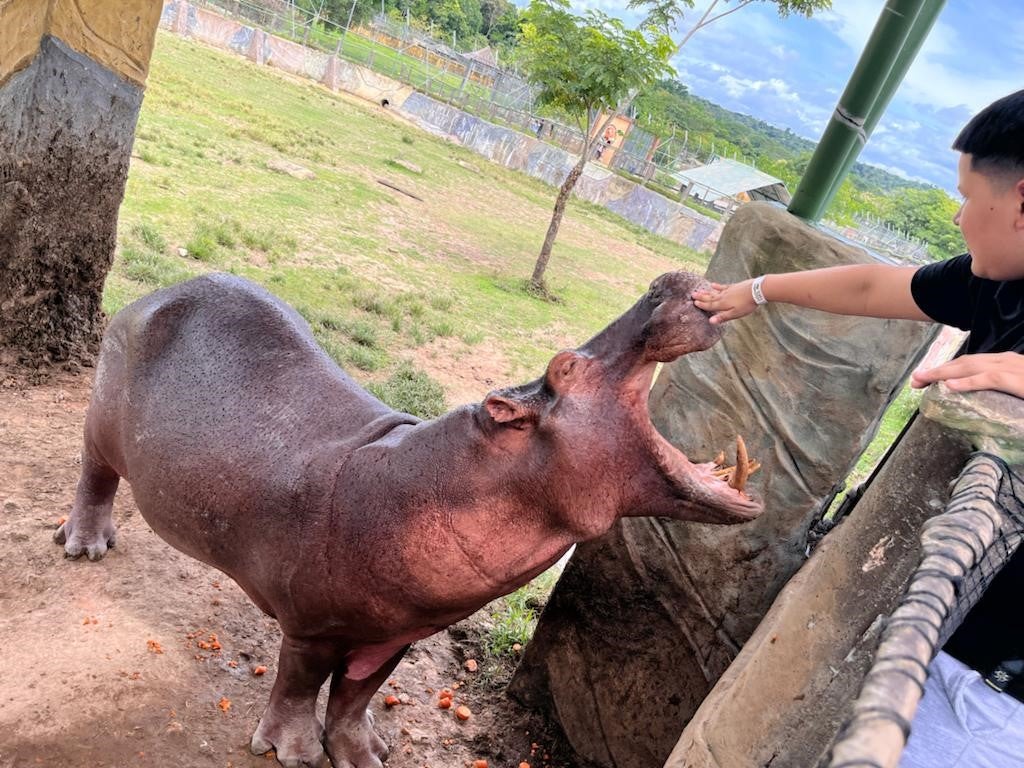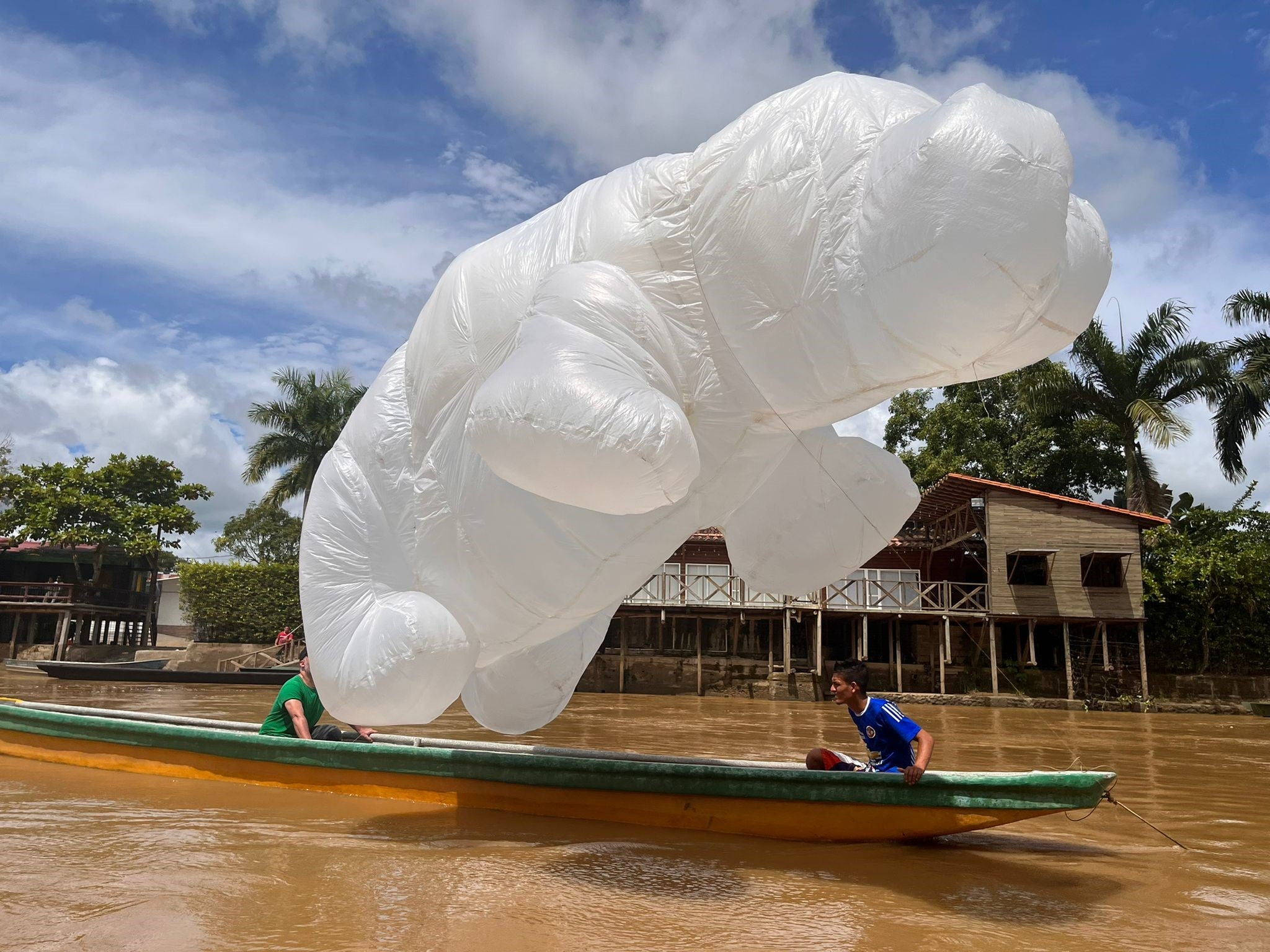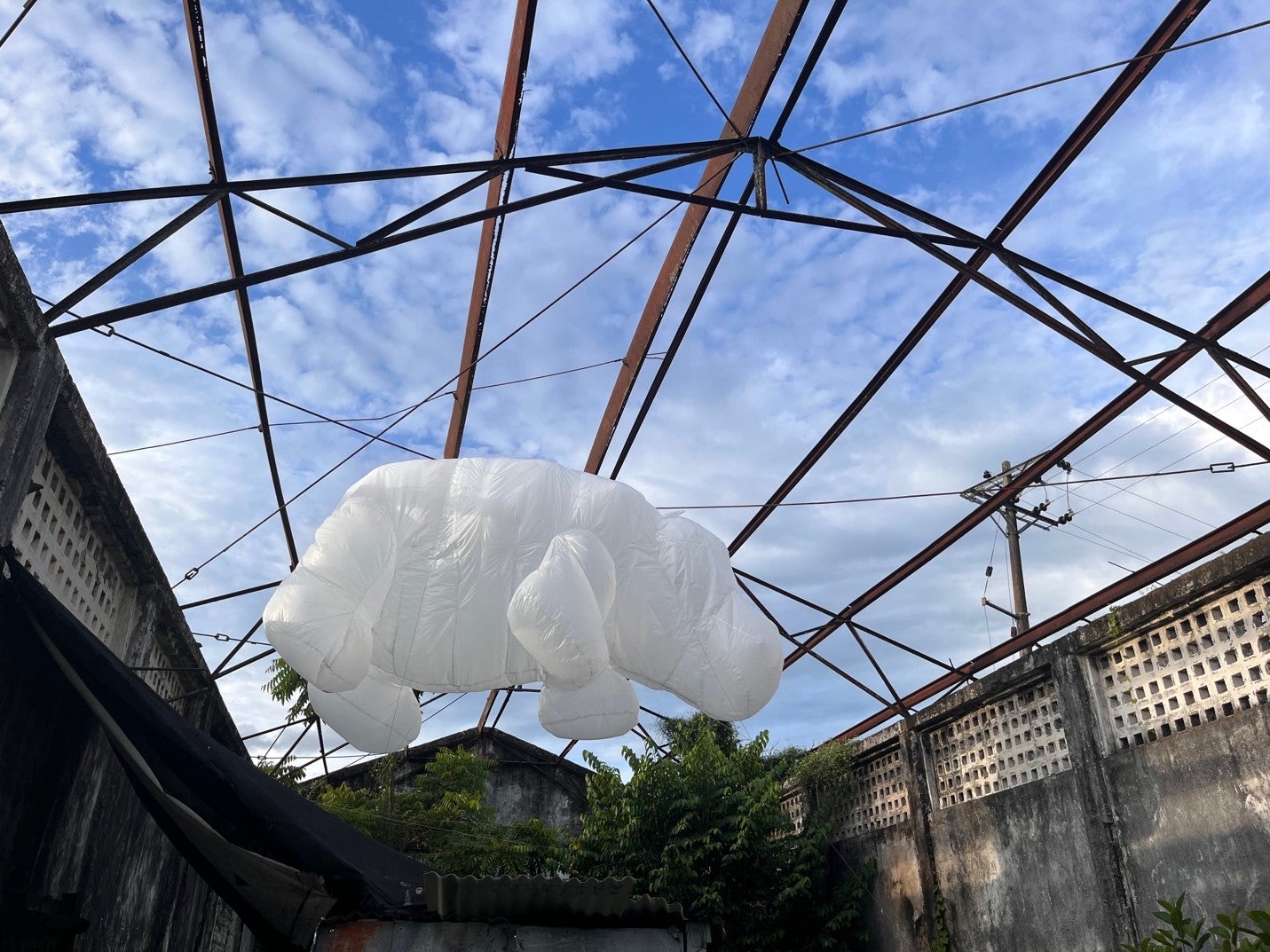Forty years ago, four small hippos arrived in Colombia. Drug trafficker Pablo Escobar brought them as part of his project to build an open-door zoo at Hacienda Napoles, his large farm in the Magdalena River Basin. After the death of Pablo Escobar in 1993, this place was abandoned. Most animals died due to lack of care; others were transferred to zoos. Only the hippos and their offspring remained.
The passage of time and excessive humidity transformed the hacienda's opulence into ruins in just seven years. In 2000, the government handed over most of this property to a company to build an amusement park on the ruins of Pablo Escobar's drug empire. In a short time, the company established a new landscape in the region: a landing strip into a water park, the garage where Escobar’s car collection was kept became a museum that intends to honor the victims of drug trafficking, the bullring became an African ethnological museum, and the Escobar's main house became an attraction that tells the story of Vanesa, a small hippopotamus who has become the park's mascot. In addition, the company imported African animals to create a new zoo, this time with the animals enclosed behind doors and cages. They also built trails with cages to exhibit Colombian animals rescued from illegal trafficking and called this attraction Amazon Safari. All these changes were made to transform the image of drug trafficking to one of a romanticized Africa “as an exotic and fun place where families can seek adventure and fun while learning about animals and nature.”

Some things did not change in the amusement park. The company did not alter the name that Escobar gave the farm, Napoles as a tribute to Al Capone, the Napoli-descended gangster who terrorized the city of Chicago in the 1920s. Neither did they replace the iconic airplane that the drug trafficker installed at the entrance and that, according to some, was the plane that Escobar transported the first shipment of cocaine. Nor did they alter the full-scale sculptures of dinosaurs built for the capo's youngest daughter. The company also chose to maintain the network of artificial lakes made by Escobar for the hippos, which allow them to move freely. The park includes some of this lake within the park's tourist circuit, especially one called Lago Hipopotamo, where the hippos that remains in the park live. In addition, they built hotels right in front of this and other lakes. Today visitors can interact with and feed some of the park's hippos.


Part of the offspring of these hippos escaped from the farm some years ago. Today, the Colombian government, helped by scientists, has mapped 133 individuals distributed in 13,000 km2 of the river. Half of those hippos are calves and juveniles, implying their reproductive rate will increase in the next three years. Biologists using Species Distribution Models (SDM) predict that by 2030 there will be 300 hippos. By 2040, this model indicates that more than half of the Magdalena River will be inhabited by 1,500 hippos. They also develop Population Viability Analysis (PVA) to simulate a hypothetical population growth under different scenarios, concluding that the only action that could probably stop this nonnative specie is a high-level extraction by culling. According to the scientists in charge of the models, the presence of these animals in the following decades will be catastrophic: they will change the composition of the water, restructure the riverbank of the basin, fragment the aquatic habitat, and come into conflict with native species, exacerbate sedimentation processes and clog waterways. There are also concerns that they will attack the fishermen and tourists who visit the river daily. With this perspective of the future brought by the SDM and PVA, the Colombian government declared hippos as an invasive species in 2022. Now, the government can invest funds in actions that prevent their reproduction, including control hunting to keeping population numbers down. However, this decision has been rejected by some local inhabitants, whose livelihoods depend on working as tourist guides to spot these animals and that they have learned to know them and interact with them. Similarly, animal rights advocates reject this measure because they are concerned that the government will decide to kill these animals, as happened with the hippo Pepe in 2009.
Pepe was one of the first hippos to escape from the Hacienda Napoles with a female hippo after confronting the pack's dominant male. Once established in the Magdalena River, the couple had a calf. Faced with the possibility of a colony of wild hippos far from Naples and worried about the possibility that these hippos would attack the local population, the Colombian authorities decided to act. Thus, the government authorized the hunt for Pepe in July 2009, carried out by the regional environmental authority with the support of the military forces and experimented hunters. A short time later, the press spread the photos of the dead and decapitated hippopotamus, which generated a strong emotional reaction from environmental organizations and other sectors of Colombian society. Some of them marched into the Ministry of the Environment office dressed in gray and with a tutu emulating a scene from the Disney movie Fantasia. These activists, and other sectors of society, demanded a stop to the hunt for hippos and the resignation of the Minister. In August 2010, the Minister resigned, and since then, the government has not authorized any hunting. Against this background, the possibility to stop the growth of this hippo population through control hunting seems unfeasible. However, the present and future risks of the presence of these animals remain.
What to do with hippos in Colombia? During my field research in the summer of 2022, I visited rural families living near the river, interviewed biologists and ecologists in charge of predictive models of species distribution and decision-makers linked to this controversy. Also, I visited the Hacienda Napoles amusement park, to understand how it was possible that today we have 133 hippos in Colombia. It was there that I first encountered a hippopotamus up close. It was eight o'clock in the morning and while I was preparing to go to the park, I heard a mother insistently calling her daughter so that she would go greet the hippopotamus through the window. Following her advice, I opened the curtain in my room and found an adult hippopotamus swimming freely in the artificial lake right in front of my hotel. The previous afternoon he was not there. And the next morning the animal had already moved on to another lake. A villager explained that they are nocturnal animals that take advantage of the night to search for nearby lakes and rivers where they will spend the day. They are enormous, robust, and strong. Also, hippos are widely denoted by scientist as an ecosystem engineer and bioengineer due to their capacity to transform the environment and impact hydrological dynamics of rivers. There are no gates or barriers to stop them. Its movement through the water can hardly be stopped. So, what to do with them?
Learning about them, and learning to live with them, was the answer that one of the scientists concerned with the unusual growth of the population gave me. Although biological and environmental sciences know a lot about hippopotamus in general, much remains to be understood about Colombian hippos. It seems that their genetic characteristics, determined by being descendants of a single male and four females, are quite particular compared to other hippos across the world. In addition, their behavior, their diet, and the characteristics of the environment have made these hippos quite unique animals. The changes in the ecology of the river produced by the hippo presence and the risks for the inhabitants of the riverbanks must be understood.


Photo: Production of the artistic work Hippos in Gravitas, developed by the Calderón & Piñeros artist collective in the summer of 2022.
What to do with the hippos in Colombia is an open question with multiple answers, many of them in conflict. For this reason, the hippos in Colombia pose important challenges to the articulation between science, politics, riverside communities, environmental activists, artists, and the river the hippos inhabit. Thinking about the future of the river requires more than calculations of the future presence of these animals and their distribution in space. It also implies imagining possible futures where sophisticated conjunctions of various knowledges, epistemologies, methods, and practices, may lead us to new ways of living with hippos, in both their risks and their promise.

